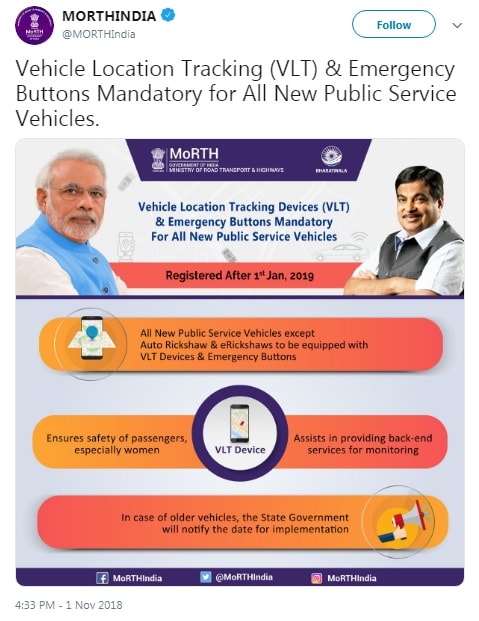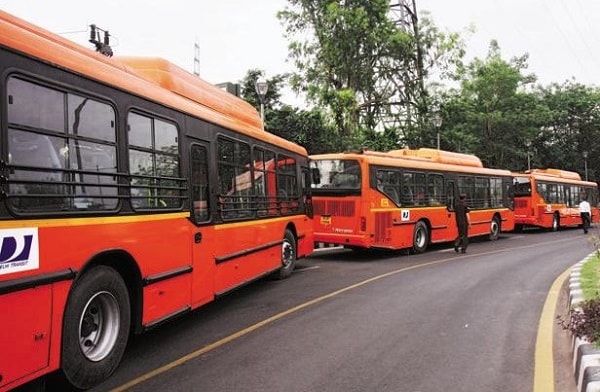The Ministry of Road Transport & Highways vide notification dated 25.10.18, has mandated that all new public service vehicles except auto rickshaws and eRickshaws, registered on and after 1st January 2019, will have to be equipped with Vehicle Location Tracking (VLT) with emergency buttons. The VLT device manufacturers would assist in providing the back end services for monitoring. This regulation is being brought in to ensure safety of passengers especially women.

In case of older public service vehicles –those registered upto December 31, 2018, the respective State/ UT Governments will notify the date by which these vehicles have to install Vehicle Location Tracking Device and Panic Buttons. The Ministry has sent an advisory to the states in this regard.
(Also read: First Aid emergency medical facilities by Indian Railways at all Railway Stations and in all Trains)
The Ministry has also notified the operational procedure for implementation of VLT cum Emergency buttons. The State or Union Territories are required to ensure execution of this order and check fitment and functional status of the VLT device in the public service vehicles at the time of checking of the vehicles for fitness certification.
Command and Control Centres will be setup by the State or VLT manufacturers or any other agency authorised by the State Government, and these centres will provide interface to various stakeholders such as state emergency response centre, the transport department or Regional Transport Offices, Ministry of Road Transport and Highways and its designated agencies, device manufacturers and their authorised dealers, testing agencies, permit holders, etc. These centres will also provide feed to the VAHAN database or the relevant database of the State with regard to the over speeding, device health status.
(Also read: Home Ministry launches portal for reporting Online Sexual Abuse and Cyber Crimes)
The details of each VLT device will be uploaded on the VAHAN database by the VLT device manufacturer using its secured authenticated access. The VLT device manufacturers or their authorised dealers will install the VLT devices in public service vehicles and register the devices along with details of vehicle on the corresponding backend systems in real-time.
The public service vehicle owners have to ensure that the VLT devices installed in their vehicles are in working condition and regularly send required data to the corresponding backend system through cellular connectivity.
VLT device manufacturers will get their devices tested for conformity of production every year after the first certification, from the testing agencies referred to in rule 126 of the Central Motor Vehicles Rules, 1989.
The testing agencies will upload the details of the VLT devices certified by the month eVAHAN database. They will also update the status relating to the Conformity of Production on the VAHAN database.
The State or Union Territories will publish Internet Protocol address (IP address) and Short Message Service Gateway (SMS gateway) details of their respective emergency response system where VLT devices will send the emergency alerts on press of emergency button.
(Also read: UIDAI introduces "Masked Aadhaar" feature to eAadhaar)
(Also read: Jio has banned many adult websites after the Court Order)
(Also read: No Cost EMI is not interest free, know how No Cost EMI works)
(Also read: Online Safety Tips for Parents, Youngsters and Organisation)
(Also read: What is Sexual Harassment and its Punishment)
Disclaimer: The above post includes some content used from PIB India website and executed on this website for fair use only. As this website is of educational nature, hence the content is used for education and awareness to the public.

